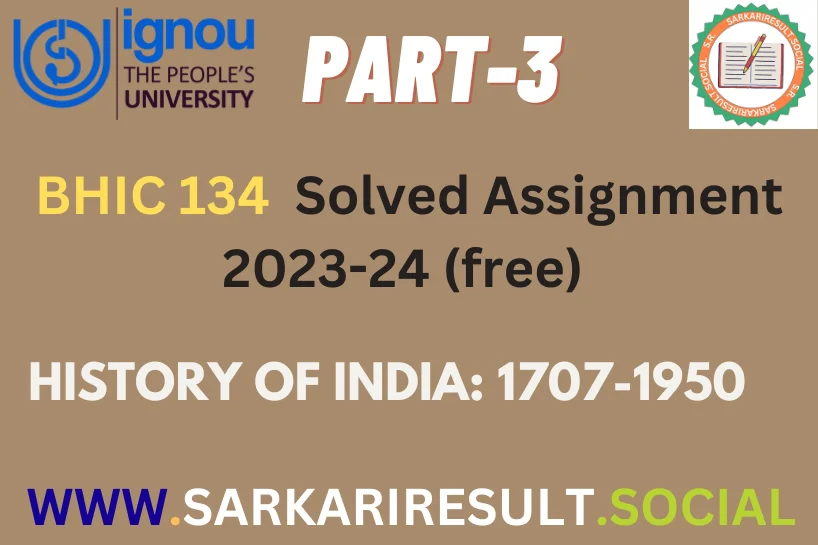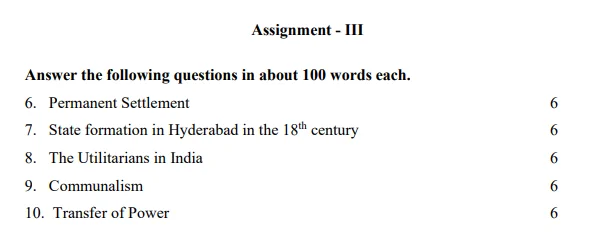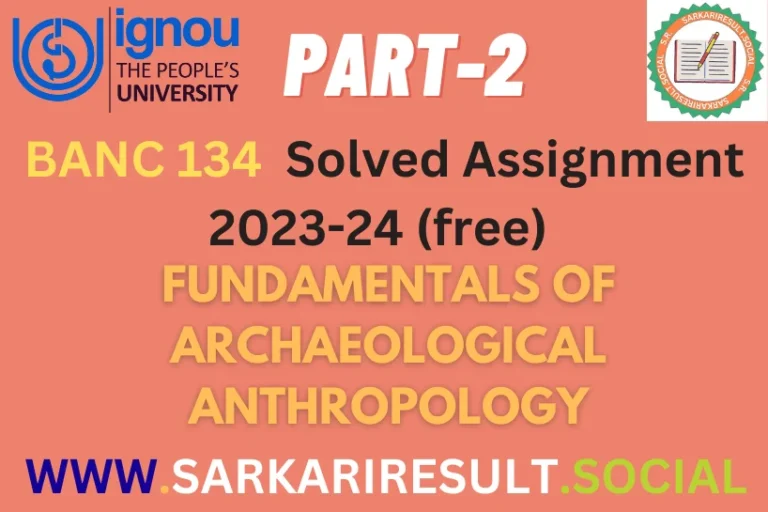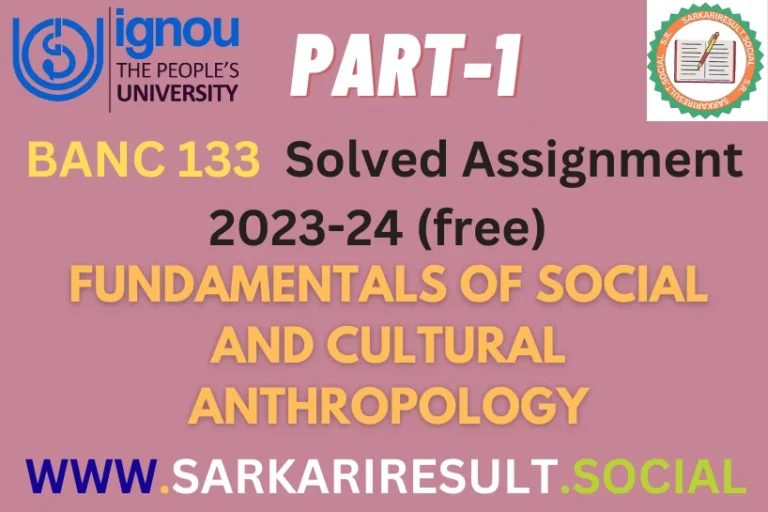BHIC 134 IGNOU Solved Assignment 2023-24 (free) Part -3

BHIC 134 IGNOU Solved Assignment 2023-24 (free) Part -3
Enrich your historical perspective with BHIC 134 IGNOU Solved Assignment 2023-24 (free) Part -3, featuring five concise questions, each necessitating a succinct 100-word response. Our detailed solutions, upholding academic standards, explore various historical facets within prescribed word limits. Expand your understanding of diverse historical narratives, meet the criteria accurately, and excel in your academic pursuit. Access BHIC-134 IGNOU Assignment 3 solutions to deepen your appreciation for multifaceted historical perspectives and elevate your scholarly competence.

6. Permanent Settlement
Ans. The Permanent Settlement, introduced in 1793 by Lord Cornwallis, aimed to stabilize revenue collection in British-ruled Bengal, Bihar, and Odisha. It fixed land revenue permanently, transferring the responsibility of tax collection to zamindars (landlords) who, in return, paid fixed amounts to the British government.
Also Read This: BHIC 134 IGNOU Solved Assignment 2023-24 (free) Part -1
This policy intended to create a stable revenue system but led to exploitative practices by zamindars, impoverishing peasants and hindering agricultural development. The Permanent Settlement, despite its intentions, entrenched landlordism and social inequalities, contributing to economic disparities and agrarian discontent during British colonial rule in India.
7. State formation in Hyderabad in the 18th century
Ans. In the 18th century, the Asaf Jahi dynasty founded the Hyderabad state after receiving the region as a grant from the Mughal Emperor. Asaf Jah I established autonomy in the Deccan, creating the Nizamate of Hyderabad in 1724.
Also Read This: BHIC 134 IGNOU Solved Assignment 2023-24 (free) Part -2
The state flourished under Asaf Jahi rule, blending Persian and Indian cultures, and expanded to become a significant princely state in India. Hyderabad’s strategic location, strong administration, and rich cultural heritage contributed to its prominence as a major political and cultural center in the Deccan region during the 18th century.
8. The Utilitarians in India
Ans. Utilitarianism, a philosophy advocating actions that maximize overall happiness or utility, influenced British policies in India during the 19th century.
Also Read This: Check BGDG 172 IGNOU solved assignment 2023-24 (Free)
Utilitarians like James Mill and Jeremy Bentham supported British colonialism, aiming to improve Indian society through rational governance, legal reforms, and utilitarian principles. They advocated for administrative efficiency, education reforms, and codification of laws to benefit both British administrators and Indians.
However, their policies often disregarded local customs and cultural nuances, leading to criticisms of cultural imperialism and overlooking indigenous perspectives while implementing utilitarian-based reforms in British India.
Also Read This: Check top Begae 182 IGNOU solved assignment 2023-24 (Free)
9. Communalism
Ans. Communalism refers to the identification and allegiance of individuals or groups primarily based on their religious, cultural, or ethnic affiliations rather than on broader civic, national, or secular identities. It often involves the promotion of exclusive interests and antagonism towards other communities.
Also Read This: BHIC 133 IGNOU Solved Assignment 2023-24 (free) Part -1
In a socio-political context, communalism manifests as the prioritization of communal identities, leading to tensions, conflicts, or divisive politics along religious or ethnic lines.
Such sentiments can result in polarization, intolerance, and discord within societies, undermining unity and the broader sense of common citizenship or belonging.
Also Read This: BHIC 133 IGNOU Solved Assignment 2023-24 (free) Part -2
10. Transfer of Power
Ans. The Transfer of Power refers to the process through which colonial rule ended and governance was handed over from the British to the newly independent nations.
In the context of India, it signifies the period from the Mountbatten Plan of 1947 to India’s independence on August 15, 1947. The Transfer of Power involved negotiations, discussions, and the partition of British India into two independent nations, India and Pakistan.
Also Read This: BHIC 133 IGNOU Solved Assignment 2023-24 (free) Part -3
It marked the culmination of India’s struggle for independence and the beginning of self-rule, symbolizing the transition from colonial domination to sovereign nationhood.







